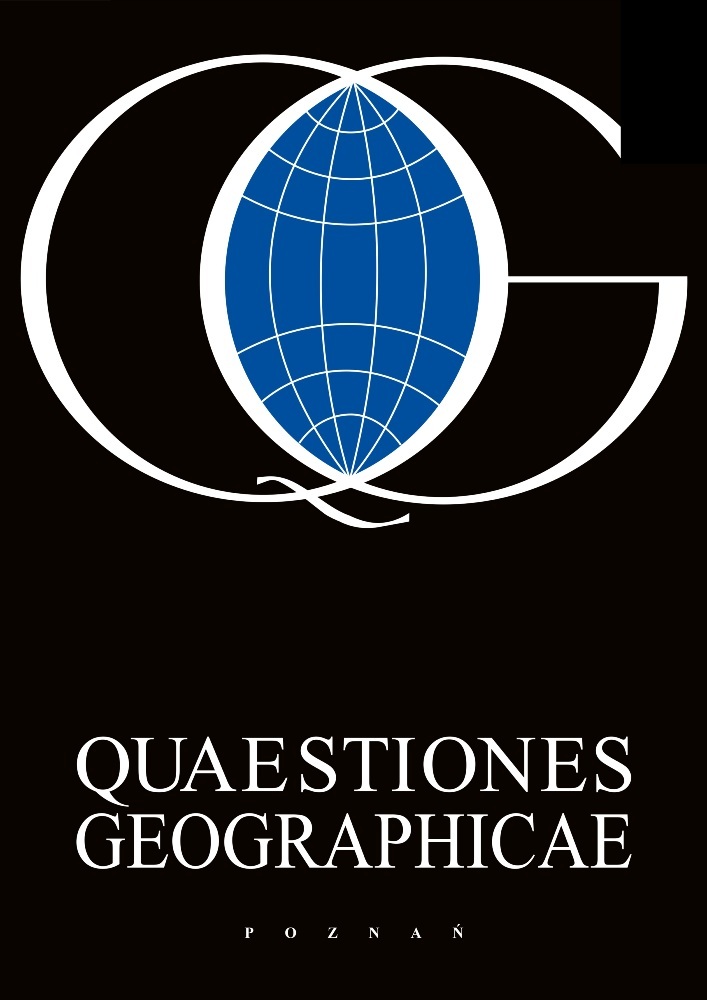Abstract
Geomorphic and lithological research conducted in the Odra River valley between Koźle and Krapkowice led to recognition of the postglacial development of the upper Odra River valley floor, for the first time, on the basis of a larger number of absolute datings. The formation of the inset alluvial fills by a meandering river started during the Early Holocene at the latest; however, the absence of a clearly developed system of large Late Vistulian palaeomeanders is notable within the analysed reach of the valley. Mid- and Late Holocene alluvial series were deposited by a river that exhibited a tendency to decrease in channel sizes. Nevertheless, large meanders were formed again in historical times. Oxbow fills in the Odra River valley are dominated by mineralogenic deposits. Their sedimentation can be correlated with the accretion of overbank and colluvial sheets in the valley floor. In the light of radiocarbon chronology, a relationship between Neolithic and subsequent phases of settlement in the catchment and the intensive deposition of these sediments cannot be ruled out.
References
Assmann P., 1934. Zur frage der Terrasenbildung an der oberen Oder. Der Oberschlesier 16: 3-13.
Jahn M. & Piasecki H., 1952. Zjawiska peryglacjalne na terasach Odry. Czasopismo Geograficzne 21/22: 392-402.
Kulczycka-Leciejewiczowa A., 1993. Osadnictwo neolityczne w Polsce południowo-zachodniej. Próba zarysu organizacji przestrzennej. Instytut Archeologii i Etnologii PAN, Wrocław.
Mazur S., 2006. Geneza i rozwój torfowiska niskiego w Większycach k/Koźla w dolinie górnej Odry. M. Sc. Thesis manuscript WNoZ, Sosnowiec.
Schubert C., 1930. Pollenanalytische Untersuchungen im Wiegschützer Moor. Der Oberschlesier 12: 435-440.
Szczepankiewicz S., 1974. Osady i formy czwartorzędowe Opolszczyzny. In: J. Rutkowski (ed.), Przewodnik XLVI zjazdu Polskiego Towarzystwa Geologicznego, Opole, 12-14 września 1974. Wydawnictwa Geologiczne, Warszawa: 69-89.
Śleszyński P., 2006. Zapis sedymentacyjny i parametry geometryczne paleomeandrów Odry poniżej Koźla jako wskaźnik warunków paleohydraulicznych i środowiskowych w holocenie. M. Sc. Thesis manuscript WNoZ, Sosnowiec.
Trzepla M., 1997. Objaśnienia do szczegółowej mapy geologicznej Polski. PIG, Warszawa.
Urmesstischblatt, 1825a. Blatt 3304 Cosel, 1:25 000.
Urmesstischblatt, 1825b. Blatt 3253 Gogolin, 1:25 000.
Waga J. M., 1994. Rzeźba eoliczna na obszarze wschodniej części Niecki Kozielskiej. Scripta Rudensia 2: 3-130.
Walczakówna M. & Baranowska W., 1964. Epigenetyczny przełom Odry pod Krapkowicami. Czasopismo Geograficzne 35: 201-212.
Wójcicki K., 2006. The oxbow sedimentary subenvironment: its value in palaeogeographical studies as illustrated by selected fluvial systems in the Upper Odra catchment, southern Poland. The Holocene 16(4): 589-603.
License
This content is open access.
